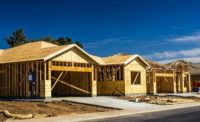NEWPORT BEACH, CA -- The experts at Zonda, the housing industry’s foremost advisors, released the New Home Pending Sales Index (PSI) for November 2021. The New Home PSI shows pending sales grew month-over-month and year-over-year. The index is a leading residential real estate indicator based on the number of new home sales contracts signed across the country.
- The New Home PSI came in at 166.1 for November, representing a 2% increase from November 2020. The index is 42.5% higher than November 2019.
- On a month-over-month basis, seasonally adjusted new home sales posted growth from October to November, up 3.6%.
- The housing market is below peak activity seen in January 2021, but the gap is narrowing. The index is 4.6% below the recent peak and is 33.2% higher than the pre-pandemic high seen in February 2020.
The New Home PSI is a unique measure of the housing market because it is made up of two components*: new home orders and the average sales rate per community. The new home orders component fell 12.9% year-over-year in November as supply continued to trickle lower. The average sales rate per community input rose positive for the first time since May 2021, increasing 3.4% year-over-year.
New home orders, which look at total sales volume, have been significantly impacted with ever-decreasing active project count. In other words, sales are down because inventory is scarce. The average sales rate per community captures how well builders are selling at the open communities and strips out the supply side. Both components slipped on a non-seasonally adjusted basis in November, a trend that is to be expected as sales typically slow later in the year.
“The New Home Pending Sales Index is back in the positive after five months where activity was trending below 2020 levels,” said Ali Wolf, Zonda’s chief economist. “The year-over-year increase in November sales was led entirely by the average sales rate component, which tells us that buyer demand still far outweighs available new home inventory.”
Pending new home sales trended above November 2020 levels in 16 of Zonda’s 25 select markets, an increase from 10 last month. Seventeen of 25 of the select markets increased month-over-month. Salt Lake City registered the largest month-over-month increase, jumping 31.6%, but remains 13% below peak levels seen in July 2020.
The relationship between the percent change in the average sale rate and new home orders can reflect an imbalance of supply and demand. Twenty-four of 25 select markets posted a positive spread, indicating current levels of volume are being restrained by lack of supply. Sales
pace remains up year-over-year in 20 of Zonda’s select markets, an increase from 11 last month. On the volume side, six metros posted an increase compared to last year, up from just one last month.
“Some seasonality has returned to the housing market, but the extent is less notable than compared to pre-COVID years,” Wolf said. “It is critical to track how buyers respond to high
home prices and rising interest rates, but for now, indications on the demand side point to a strong spring selling season for 2022.”
New home data is susceptible to outsized swings in contract activity based on shifts in the number of actively selling communities. As a result, Zonda normalizes the data to ensure consistency across the index. The New Home PSI blends the cumulative sales of active or recently sold-out projects with the average sales rate per community, which adjusts for fluctuations in supply. Furthermore, the New Home PSI is seasonally adjusted based on each markets’ specific seasonality and removes outliers. The index is baselined to 100 for June 2016. Today’s national New Home PSI is 66.1% above the base level.



